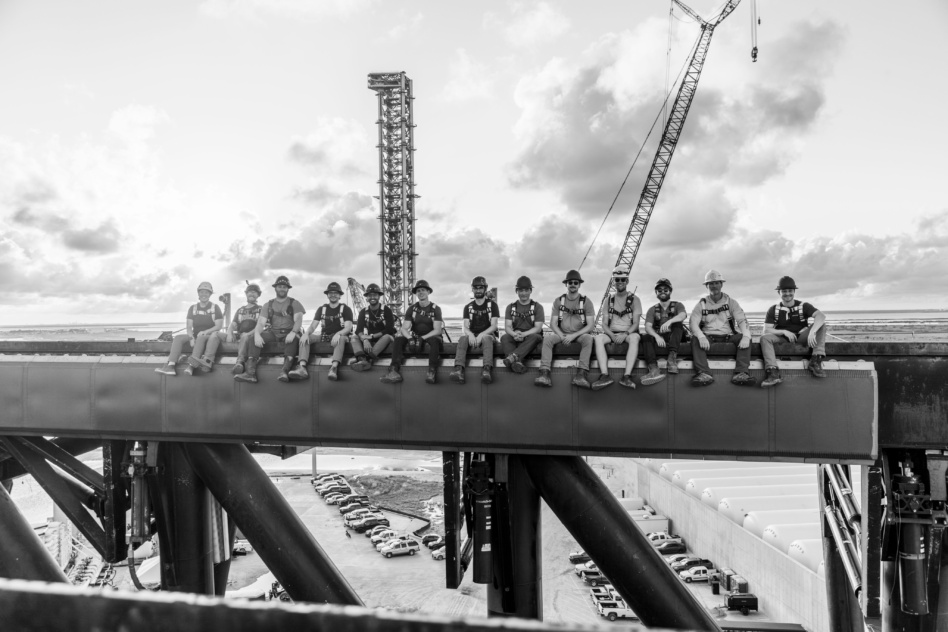The companies pursuing private spaceflight had another big year in 2024, and Payload is here to break down the biggest hits and misses, with a focus on advanced tech that did (or, yikes) didn’t work. Please chime in with your takes on what we missed and what to look out for in 2025.
The Commercial Hits of 2024
Chopsticks: When SpaceX flew a Super Heavy booster back to its Boca Chica spaceport and “caught” the 15-story tall vehicle with a pair of robotic arms, the future of rapidly reusable rockets could be glimpsed through the smoke. But as a subsequent aborted attempt showed, there are more kinks to iron out (and more wild sights) coming in the 2025 Starship test campaign.
Dawn and out: Jared Isaacman popping out the top of SpaceX’s Crew Dragon as high as 740 miles above the planet made history as the first civilian EVA, with the first SpaceX employees to visit space along for the ride.
Back to the future: After some regulatory back and forth, Varda Space returned its first orbital factory to Earth in February following nearly eight months in space with microgravity-manufactured biologics on board.
A soft(ish) landing: Intuitive Machines’ first lunar lander didn’t have a spotless trip to the surface of the Moon, but Odysseus landed safely enough to communicate with flight controllers and become the first private mission to touch down successfully.
Hype train: The Tanager satellite developed by Planet Labs and the non-profit Carbon Mapper is the most advanced space spectrometer built and deployed by a private company, and its first light images hint at the power of these advanced remote sensors.
I’m not touching you: Astroscale’s ADRAS-J mission saw the company’s spacecraft approach within 15 meters of an abandoned Japanese rocket body in orbit, circling it to carefully characterize the space debris ahead of a planned mission to dispose of the junk—the first time a private organization has come close to a derelict vehicle in orbit.
Recon: A private company collected in-space imagery of a Chinese military satellite on orbit within seven days of its launch in a demonstration organized by the Space Force’s Tactical Surveillance, Reconnaissance, and Tracking (TacSRT) program on behalf of US IndoPacific Command. No longer a demo program, TacSRT will now push to bring commercial remote-sensing directly to warfighters in 2025.
Rocket Lab sets Electron launch record. For almost a decade, we’ve been waiting for a rocket-maker to offer some meaningful competition to SpaceX, and Rocket Lab stepped up in 2024 with its Electron. The small launcher became the fastest commercial rocket to 50 flights and set a new company record with 15 launches (and counting) in 2024.
A new rocket… ULA sent its next-gen Vulcan rocket to orbit twice this year, with two successful launches intended to qualify the vehicle to fly a series of already-awarded national security missions.
The Commercial Misses of 2024
…that’s still not ready: Despite the successes, there are still outstanding issues with Vulcan’s solid rocket boosters and faring that have pushed the rocket’s certification (and two planned Space Force missions) into next year. Get that paperwork done!
Do I even need to say? Aye yi yi. The second attempt at a crewed flight test for Boeing’s Starliner space capsule turned into a months-long saga that…let’s not say stranded, but detained two astronauts at the ISS. It’s still not clear when and how Starliner will be certified for operations, or if Boeing will be the company that ultimately finishes the job.
Moon miss: Astrobotic’s first lunar mission failed shortly after launch when the company’s Peregrine lander developed a propellant leak on the way to the Moon, and NASA’s IG discovered that the company didn’t perform full qualification testing on the vehicle’s propulsion system. Astrobotic will get another shot with its larger Griffin lander in 2025.
GLENNNNNNN: The first mission of Blue Origin’s long-awaited New Glenn rocket was canned after the company missed a celestial deadline in October to launch two NASA spacecraft to Mars. No-longer-new CEO Dave Limp is pushing to achieve the rocket’s maiden launch by the end of the year, but the clock is ticking…
ABL Space bows out: The small-launch company lost a vehicle during an August test anomaly, and the failure ultimately cost the company its business model: The firm pivoted from sending payloads to orbit to adapting its tech for missile defense testing.
No Neutron: Rocket Lab’s next launch vehicle was aiming to be ready for launch this year, but now the rocket’s maiden flight is delayed until 2025. Neutron is hardly the most delayed rocket mentioned in this piece, but it highlights that the world is still waiting for a Falcon 9 competitor.
Falcon flux: Speaking of, the most important rocket in the world got a case of the hiccups this summer. Problems with SpaceX’s Falcon 9 second stage propulsion system led to the company’s first lost payload since AMOS-6 in 2016. While a two-week break from flights would be a victory for most rocket companies, this one led to cascading delays in SpaceX’s over-stuffed manifest.
No suitor: It hasn’t been the greatest year for NASA’s commercial partnerships (see Astrobotic and Boeing items above), and that continued when Collins Aerospace bailed on a contract to develop a new spacesuit for the agency. Axiom Space remains in the mix to deliver new space suits to NASA, and for now the agency will have to depend on it.




